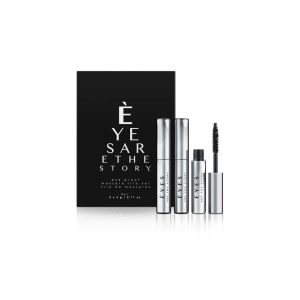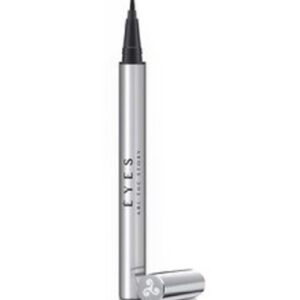Achieve Flawless Eye Health with Makeup: Strategies for Managing Dry Eyes
In the dynamic and ever-changing beauty landscape, many women face a significant dilemma: how to enhance their beauty through makeup while also preserving eye health. As makeup enthusiasts master the techniques of applying winged eyeliner, volumizing mascara, and achieving the perfect smoky eye, they often encounter an unexpected hurdle—dry eye syndrome.
This condition, which arises from either inadequate tear production or poor tear quality, necessitates a reevaluation of makeup application practices. For numerous individuals, the discomfort and irritation associated with dry eyes can lead to the decision to forgo makeup altogether, which poses a notable challenge for those eager to showcase their creativity and expressiveness through cosmetics.
Discover the Innovative Approach of ÈYES ARE THE STORY: Merging Science and Beauty
At the forefront of this transformative approach is ÈYES ARE THE STORY, a pioneering brand that seamlessly combines scientific research with high-quality beauty products. The inspiring journey of founder Amy Gallant Sullivan not only underscores her profound commitment to eye health but also highlights her family’s remarkable contributions to the ocular field.
Amy’s upbringing in a family of healthcare professionals fostered an early understanding of the intricate nature of ocular science. Her father, David A. Sullivan, held an Associate Professorship in Ophthalmology at Harvard Medical School, while her brother, Benjamin D. Sullivan, was instrumental in establishing TearLab, now known as ScoutPro under Trukera Medical.
Furthermore, her mother, Rose, an intensive care nurse, provided invaluable insights into conditions like dry eye disease (DED) and meibomian gland dysfunction (MGD).
Growing up in an environment rich with discussions surrounding eye health naturally cultivated a heightened awareness of ocular surface disease (OSD) and its far-reaching implications. It was during her participation in the Tear Film & Ocular Surface Society (TFOS) that Amy recognized a critical demand for consumer products that prioritize eye safety.

Uncovering Key Findings: The Gender Gap in Dry Eye Disease
A pivotal moment in Amy’s research occurred when she identified that dry eye disease is significantly more prevalent in women than in men, with women experiencing symptoms nearly twice as often. This critical discovery led to an essential inquiry: What specific activities are more common among women compared to men?
The answer emerged clearly—cosmetic usage. Research indicates that women typically utilize about 12 beauty products daily, while men generally average around six, reflecting a stark contrast in beauty routines.
As Amy delved deeper into her analysis, she uncovered unsettling truths regarding the ingredients commonly found in cosmetics.
For example, benzalkonium chloride (BAK), a preservative often used in glaucoma treatments, is also prevalent in many cosmetic formulations, including eye makeup.
Even more concerning is that the permissible concentration of BAK in cosmetics can be thousands of times greater than that found in glaucoma medications, raising alarming safety issues for those with sensitive eyes.
This startling realization ignited a rigorous two-decade research journey for Amy, aimed at understanding the connection between cosmetics and dry eye symptoms. The culmination of her efforts? ÈYES ARE THE STORY—a revolutionary line of cosmetics and skincare specifically designed for individuals with sensitive eyes. Amy coined the term “optocosmetics” to describe this groundbreaking fusion of beauty and pharmaceutical science that emphasizes the importance of eye safety.
Understanding Dry Eye Syndrome: Symptoms and Root Causes
What precisely constitutes dry eye syndrome, and why is its occurrence increasingly common?
Dry eye syndrome occurs when the eyes fail to produce an adequate quantity or quality of tears necessary for effective lubrication of the eye surface, or when they struggle to retain tears effectively.
This condition can lead to an array of uncomfortable symptoms, which may include:
- Stinging or burning sensations in the eyes
- A gritty or sandy feeling in the eyes
- Redness and irritation of the eye surface
- Blurred vision that can fluctuate
- Increased sensitivity to light and glare
- Difficulty wearing contact lenses comfortably
Examining the Intricate Link Between Makeup and Dry Eyes
The relationship between makeup application and the experience of dry eyes is both complex and multifaceted. Those sparkling eyeshadows that we adore? The microscopic particles can easily infiltrate our tear film, leading to irritation and discomfort.
Similarly, the mascara designed to enhance our lashes may harbor bacteria that can worsen eye discomfort. Moreover, the processes of applying and removing eye makeup can disrupt the delicate tear film that is essential for maintaining well-lubricated and healthy eyes.
Exploring the Factors Increasing Women’s Susceptibility to Dry Eyes
Women are at a heightened risk of developing dry eyes due to a variety of factors. Hormonal fluctuations throughout their lives, particularly during menopause, can have a profound impact on tear production levels.
In addition, the prevalence of autoimmune disorders such as Sjögren’s syndrome is notably higher among women, further complicating this issue. Most critically, the increased reliance on eye makeup and the popularity of false lashes can significantly disrupt the sensitive balance required for optimal eye health.
The Article Cosmetics for Dry Eyes: Makeup Tips for Sensitive Skin Was Found On https://limitsofstrategy.com








The intersection of beauty and health, especially when it comes to eye care, is an important conversation that resonates with many of us. I’ve personally struggled with dry eyes, and it’s often a delicate balance between feeling fabulous with my makeup and ensuring my eyes remain comfortable and healthy.
The struggle with dry eyes while trying to enjoy makeup is something many people can relate to. It’s a balancing act, isn’t it? On one hand, you want to express your style and feel vibrant, while on the other, comfort and eye health often take a backseat. It’s a tricky position.
It sounds like you’ve been navigating a tricky path between beauty and comfort—so many of us can relate to that balancing act. Dry eyes can really put a damper on the joy of putting on makeup or feeling great about how we look. It’s interesting how the pursuit of beauty often intersects with our health, and I think it’s a conversation that deserves way more attention than it usually gets.
Navigating the balance between beauty and comfort can feel like walking a tightrope, can’t it? You hit on a crucial point about how often our desire to look good gets tangled up with our health. Many of us don’t consider how things like dry eyes can impact our daily makeup routine or even our confidence.
I completely resonate with the struggle of balancing makeup artistry with the realities of dry eyes. As someone who loves experimenting with bold looks, I’ve often found myself grappling with irritation after a full day of wear. It’s refreshing to see a focus on merging beauty with eye health, especially with innovative approaches like ÈYES ARE THE STORY.
It sounds like you’re navigating a pretty common yet challenging crossroads in the world of beauty. The struggle of loving makeup but dealing with dry eyes is something many of us can relate to, and it’s great to see how you’re approaching that balance. Bold looks are so much fun to experiment with, but it’s not worth sacrificing comfort for the sake of style.